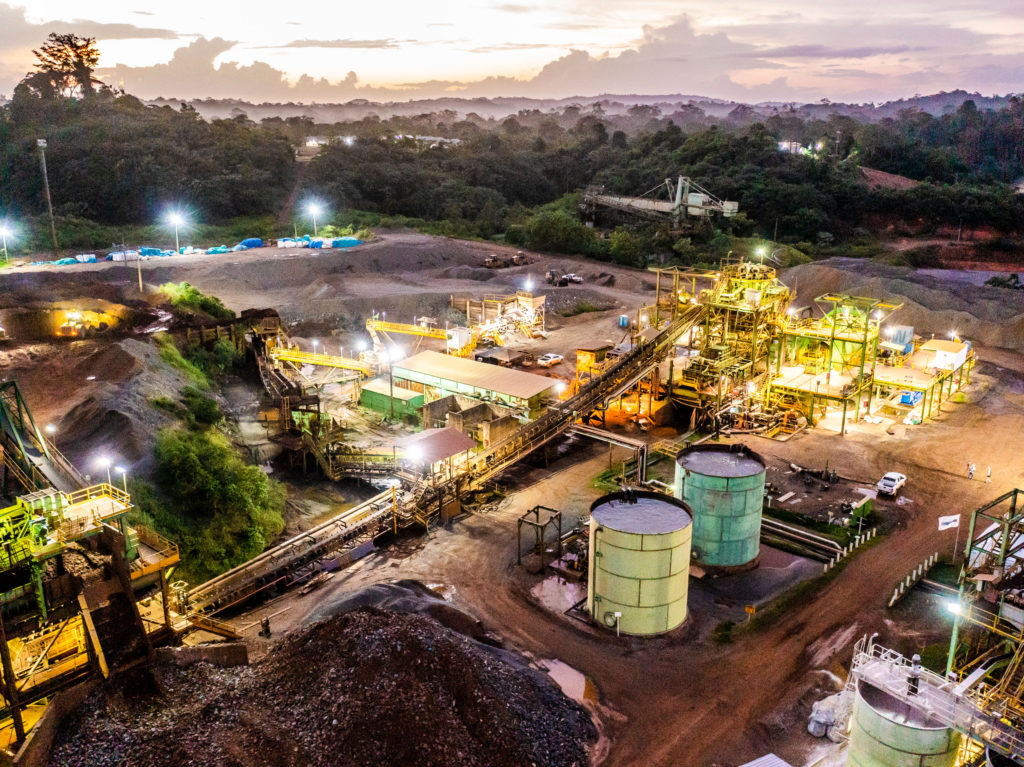JV Article: Great Panther Mining aims to add more ounces at Tucano in Brazil


Canadian miner Great Panther Mining (TSX: GPR; NYSE: GPL) is a gold and silver producer with a diversified portfolio of assets in the Americas.
The Vancouver-headquartered company owns properties in Brazil, Mexico, and Peru, including three producing gold and silver mines, an advanced development-stage project, and a large land package with district-scale potential.
Great Panther is focused on advancing its 100%-owned flagship Tucano gold mine in Brazil’s Amapa state, about 200 km northwest of the state capital Macapa.
The 197,283-hectare property covers an approximately 90-km-long section of the Vila Nova greenstone belt. It comprises eight open-pit deposits and an underground project over a seven-km-long mineralised trend, as well as a 10,000 tonne per day capacity carbon-in-leach processing plant.
Rob Henderson, Great Panther’s president and CEO, says that “while Tucano lies within a relatively remote location, it benefits from excellent infrastructure, including direct road access to the site, hydropower, and telecommunications, as well as access to the port of Santana, approximately 200 km to the southeast. Over 90% of the mine’s workforce come from nearby communities.”

Last year, the mine produced 125,417 oz. of gold. A 2020 mineral resource estimate for Tucano estimated 16.2 million measured and indicated tonnes grading 1.83 g/t gold for 953,000 contained oz. gold and inferred resources of six million tonnes of 2.77 g/t gold for 534,000 gold ounces. The estimate was based on open pit resources at the Urucum, Urucum East, TAP AB, and Duckhead deposits, underground resources at the Urucum North and TAP AB, and stockpiles.
According to Henderson, most of the exploration of Tucano has so far focused on the open pits and the underground potential at Urucum North, with very little regional exploration.
“One of the primary objectives of our exploration program at Tucano this year was to extend the high-grade underground zone,” he said. “The other key objectives were to extend the open-pit mine life and to define the regional potential of this district-scale land package.”
The 2021 drill program demonstrated the potential for extending current open-pit resources to the north at Urucum North, he added. Highlights included drillhole 21URNDD018, which intersected 4.8 metres grading 8.02 g/t gold from 201.2 metres downhole; hole 21URNDD017, which returned three metres of 6.83 g/t gold from 214 metres and 7.6 metres grading 8.03 g/t gold from 235 metres; and 21URNDD016, which cut 2.35 metres of 5.21 g/t gold from 206.3 metres.
The drilling also confirmed the continuity of high-grade mineralisation in an underground zone at the deposit, with holes 21URNDD005 intersecting 6.2 metres of 14.26 g/t gold from 480.8 metres and 21URNDD015 returning 6.05 metres of 9.34 g/t gold from 479.6 metres.
The drill results “demonstrated the potential for additional near-term gold production and the high-grade intercepts at the deposit have allowed us to expedite studies to support a decision to initiate underground production to supplement the open-pit feed to the mill,” Henderson said.

Earlier this year, the company undertook an extensive regional soil sampling and mapping program over eight high-priority exploration corridors defined in the 2020 exploration program. The regional exploration included a 500-line-km soil sampling program focused on identifying and fast-tracking gold targets within a 20-km radius of the mine that may be exploited by open-pit mining methods, with ore processed by the plant at Tucano.
Results from multi-element analysis of soil samples from Mutum, the first corridor to be evaluated, about 15 km northeast of the Tucano mine, indicated a continuous 3.8-km-long mineralised gold trend.
“The soil geochemistry results together with the trend’s structural and lithologic setting reflect features commonly associated with gold deposits,” Henderson said. “Mutum is now being mapped in detail and has been prioritised for drill testing later this year.”
He added that while the company’s immediate focus is to make new discoveries within the 20-km radius of the mine, “in the longer-term, we believe there exists significant upside potential for exploration within the wider land package.”
Great Panther plans to release an updated mineral resource estimate for Tucano in the first quarter of next year. Depending on the study results at Urucum North, it will also decide by the middle of next year whether the zone will be mined as an underground operation.
The preceding Joint-Venture Article is PROMOTED CONTENT sponsored by GREAT PANTHER MINING and produced in cooperation with The Northern Miner. Visit www.greatpanther.com for more information.
Comments